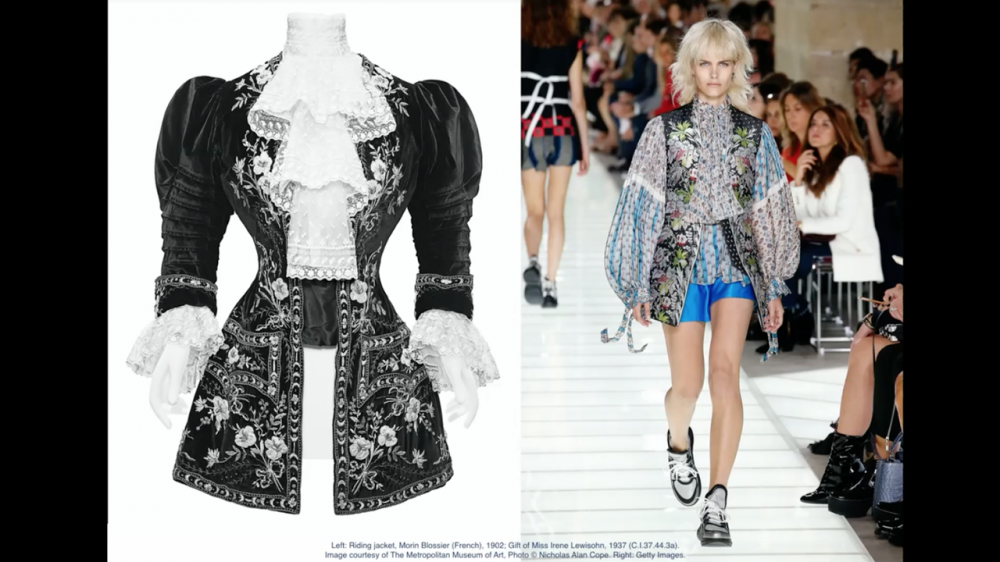
Four big lessons fashion could learn from the tech industry
Thanks to innovative design and key legislation, tech is leading the way in the march towards lower impact, with a focus on longevity, repair, and customisation
We’re living in the future, or hell, depending on who you ask. The tangible trappings of fashion – texture, fit, expression, collectability – have been eaten up and regurgitated by the tech world, just as likely to be snapped up by a crypto bro as a seasoned fashion follower. The one-off couture piece has become the limited edition NFT and the metaverse is giving Milan a run for its money. From in-game fashion shows and collections to digital clothes and AR models, fashion and tech are becoming inseparable.
Like fashion, the tech industry is far from perfect, and not just because it’s responsible for some of the most soulless, transactional art you’ve ever seen. Depending on the system its running on, cryptocurrency can be an energy-intensive, environmental nightmare; a single Ethereum transaction having an equivalent carbon footprint to 323,609 VISA transactions, and planned obsolescence increasing the churn of tech lead to the generation of 53.6 million metric tons of electronic waste (e-waste) in 2019.




However, amongst the crypto hype and the never-ending upgrade cycle is some fresh thinking and design. Lead by both industry insiders and consumers, a new, sustainability-focused undercurrent is bubbling up, centred around longevity, repair, customisation, and future-proofing. Thanks to global campaigns, some innovative design, and the introduction of key pieces of legislation, select facets of the tech industry are leading the way in the march towards lower impact, environmentally considered production, and here’s what fashion can learn from them.
RIGHT TO REPAIR
The Right to Repair campaign launched in September 2019, with an aim to remove the arbitrary barriers brands had put in place to make repairing products harder. The campaign worked, and the EU introduced Right to Repair legislation in 2021. Under the legislation, brands have to make appliances longer lasting and supply spare parts for up to ten years.
In France, the measures went further. From 2021, brands that sell washing machines, smartphones, laptops, televisions, and electric lawnmowers had to list them on a Repairability Index. Scores out of ten are based on five criteria: the availability of free technical documents, the ease of disassembly, the availability of spare parts, the price of spare parts, and a further criterion specific to the product category. Apple scored 5.5 for its iPhones, while the Microsoft surface duo scored 3.7 points, lower than its laptop average of 7.5.
Now, repairing clothes isn’t quite the same technical undertaking as repairing a phone or a laptop, but fashion can still draw plenty from the right to repair movement in tech. An own-brand repair department, or a published network of accredited repairers would let buyers know how easily they could access repairs and alterations; a fashion warranty for free repairs for the first 3-5 years would guarantee a level of longevity; and products with extra seam allowances would allow for clothes to be altered to account size fluctuations. While we wait for the industry to catch up, look out for fashion brands already putting in the extra work. Hiut and Nudie offer free repairs for life, and Mary Benson (no relation…) makes clothes with extra seam allowances so they fit forever.
DESIGN FOR DISASSEMBLY
Part of what makes repairing and, later down the line, recycling tech so difficult is that devices can be hard to disassemble, secured with non-standard screws and adhesives, and built with blended materials. To counteract this hurdle, some brands are beginning to design disassembly in from the beginning. Fairphones, for instance, are manufactured without glue and with standard screws so they’re easy to open. Fairphone has long been a leader in sustainably made tech but now others are following suit. BMW’s new concept car, the i Vision Circular, features quick release connections for simple disassembly; the Framework laptop can be dismantled using only the screwdriver that comes with it; and the PuzzlePhone doesn’t need unscrewing, it just slides apart. Even sex toy manufacturers are getting in on the act. The Womanizer Eco can be fully disassembled into its individual parts, and comes with a matching tool to remove the cover and battery.
Within fashion, the ability to disassemble clothes is important in order to separate out different fabrics and components – you can’t just chuck a pair of jeans, zips, rivets and all, into a mechanical shredder, they need to be taken apart. It’s particularly vital for shoes, which are notoriously difficult to disassemble due to the use of adhesives and the sheer amount of components. As many as 65 parts requiring up to 360 steps for assembly go into a pair of shoes, and the difficulty in undoing this means that as many as 95 per cent go to landfill at the end of life.
Were disassembly considered from the beginning, there wouldn’t need to be a battle with stitches, glues, and rivets. And, like Renault, which is setting up a dismantling line in its factory in France, brands could recapture and reuse what they’ve already produced. How would fashion achieve this? There are some hints out there already. Shirring and manipulating rather than cutting fabrics, in the style of Róisín Pierce, would mean fabrics could be returned to their original form. Simple, pull-apart shoes from the likes of VOYLOK show a workaround for adhesives, and dissolvable seams from companies like Resortecs and Wear2Go would speed up the process of taking garments apart for reuse or recycling.
PRE-CYCLING
While being able to take something apart is a prerequisite for efficient recycling, so too is the choice of materials. With so many different types of plastics, metals, and fixings in the equation, electronics recycling is a cross-your-fingers kind of game. You make something out of whatever the most appropriate materials are, and you hope that it will be able to be recycled.
While most brands are focusing on using recycled materials like “ocean-bound plastics”, some brands are tentatively starting to consider end-of-life recycling when choosing materials. Electrolux, for instance, created the 2-Infinity prototype vacuum cleaner, which is 90 per cent recyclable, an improvement on the industry standard of around 75%. New electric toothbrush brand SURI also prioritised recyclability with an aluminium body, corn starch brush heads, and castor oil bristles.
While the ideal is keeping clothes in circulation for as long as possible, when they do become too worn out, recycling is better than landfill. While technically most fabrics can be recycled into rags, filling or insulation, aka downcycled, material to material recycling should be the goal. To achieve that designers must choose their fabrics widely, focusing not only on recycled materials, but recyclable materials too.
UPGRADES OVER BRAND NEW
The average lifespan of a garment in the UK is estimated to be approximately 2.2 years which, funnily enough, is around the same amount of time we keep our phones for. “My device is old” sits top alongside the cost of repair as the reasons British people buy a new phone and, given the churn of trends, it’s likely another parallel between phone ownership and clothes ownership.
Aware of the waste they’re responsible for (or, in many cases, aware that consumers are angry about the waste they’re responsible for) certain brands are making their tech upgradable to put the brakes on the buying cycle. As a result of the ease with which they’re disassembled, both the aforementioned Fairphone and Framework laptop are upgradeable. Fairphone estimates that by replacing a camera, users can save up to 90 per cent of emissions compared to buying a new device. Framework owners, meanwhile, can upgrade memory and storage, ports, and the mainboard; much less wasteful than buying a new laptop every time a new spec is available.
Repair services such as Sojo and The Seam answer some of the brief in that they will keep clothes in active wear for longer. However, creative repurposing services offered by the likes of Helen Kirkum and TOM-O look more like what the future could hold; taking old pieces and upgrading them into something completely new. Modularity can also play a key role in upgradable fashion. Brands like CAALO and Edit+, which both sell modular, adaptable clothing, open up the possibility of selling new attachments – hoods, pockets, belts, sleeves, collars – to update existing pieces, rather than pushing entire new garments.
As fashion free-falls deeper into the tech world, many brands are jumping on the hype without much thought for the real-world sustainability promises they’ve made. But there is the possibility for a better, more environmentally focused meeting point between the two industries – we just need to look in the right places.



